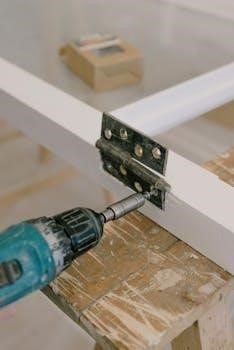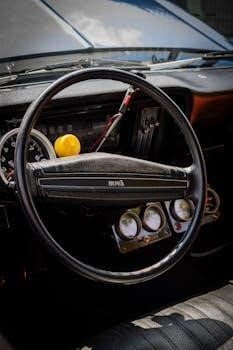The make, model, and year of your vehicle significantly impact the cost. Some vehicles have readily available power seat options, while others require more custom solutions, influencing the final price.
Choosing between new and used power seats dramatically alters the overall cost. New seats come with a premium price, while used seats from salvage yards or online marketplaces offer a more budget-friendly option.
The vehicle’s make, model, and year are primary factors influencing the cost of upgrading to power seats. Certain vehicles, like the 2009-2014 Ford F-150, might have existing online communities discussing similar swaps, offering valuable insights and potential solutions. Older vehicles or those with limited aftermarket support may require more custom fabrication and wiring, increasing the overall expense. The availability of compatible power seat options, either new or used, specifically designed for your vehicle model will greatly determine the ease and affordability of the conversion. Consider researching vehicle-specific forums to gauge the difficulty and potential pitfalls.
The decision between new and used power seats significantly impacts the project’s budget; Opting for brand new seats guarantees pristine condition and potentially a warranty but comes at a higher cost, possibly exceeding $2000. Used seats, sourced from salvage yards or online marketplaces, offer a more economical alternative, potentially costing between $100 to $400 per seat. However, used seats might exhibit wear and tear, requiring repairs or upholstery work. Furthermore, the availability of matching trim and features in the used market can be inconsistent, potentially affecting the overall aesthetic and functionality of the upgrade.
Replacing manual seats with power seats involves several cost factors. These include the seat acquisition cost, installation labor expenses, and the price of any additional parts or wiring needed for the conversion.
The seat acquisition cost represents a significant portion of the overall expense. Depending on your choice, standard seat replacements range from $100-$400 for basic fabric or manual seats. Power-adjustable seats, offering electronic adjustments, typically incur higher costs, ranging from $300 upwards. Opting for new seats directly from the manufacturer or aftermarket retailers guarantees quality but at a premium. Alternatively, sourcing used seats from salvage yards or online marketplaces presents a cost-effective approach. However, used seats may exhibit wear and tear, so careful inspection and consideration are crucial before purchase.
Installation costs vary based on whether you opt for a DIY approach or professional installation. DIY installation saves on labor costs but demands technical skills and tools. Conversely, professional installation ensures proper fitment and functionality, mitigating potential issues. Labor costs for professional installation can range significantly, influenced by the complexity of the job. Factors such as wiring modifications, harness fabrication, and SRS system integration impact the overall cost. Obtaining quotes from multiple garages helps secure a competitive price. Budgeting for potential unforeseen complications during installation is essential for a realistic cost assessment.
Beyond the seats themselves and installation labor, additional expenses arise from necessary parts and wiring. Converting manual seats to power seats often necessitates wiring harness fabrication to ensure proper electrical connections. Power supply upgrades may also be essential to accommodate the increased electrical load. Furthermore, specialized connectors, fuses, and relays contribute to the overall expense. Compatibility with the vehicle’s existing electrical system is paramount, potentially requiring additional modules or adapters. Neglecting these supplementary costs can lead to budget overruns. Thorough research and consultation with professionals help identify all required parts, preventing unexpected financial burdens during the conversion process.
Choosing between DIY and professional installation impacts the final cost. DIY offers potential savings, while professional installation guarantees expertise and reduces the risk of errors.
Opting for a DIY installation of power seats can lead to significant cost savings, primarily by eliminating labor charges. However, this route demands a solid understanding of automotive electrical systems and wiring. You’ll need tools, potentially including a harness fabrication kit. DIY installers must consider the time investment and potential risks of damaging the vehicle’s electrical components. Incorrect wiring can lead to SRS system malfunctions. Thorough research and caution are essential for a successful and safe DIY power seat installation. Carefully assess your skills before proceeding.
Professional installation ensures proper wiring and system integration, minimizing risks to your vehicle’s electrical components and safety features like the SRS system. Professionals possess the expertise to handle compatibility issues, trim differences, and power supply needs. A professional installation typically includes a warranty, offering peace of mind and protection against potential malfunctions. While more expensive upfront, professional installation can prevent costly repairs due to incorrect DIY work. They can also fabricate the necessary harness and ensure that the power seats function correctly with your vehicle’s existing systems, maximizing comfort and safety.
Locating suitable power seats involves exploring various avenues like salvage yards for used options, online marketplaces offering a range of choices, and dealerships for new or certified pre-owned seats.
Salvage yards are a potential goldmine for finding used power seats at a fraction of the cost of new ones. However, be prepared to do some searching and possibly some cleaning or minor repairs. Ensure the seats are compatible with your vehicle’s make and model before purchasing. Inspect the seats thoroughly for any damage or wear and tear. Negotiate the price, as salvage yards are often open to offers. Remember that salvage yards typically offer limited warranties, so carefully weigh the risks and benefits before making a final decision.
Online marketplaces like eBay, Craigslist, and specialized auto parts websites offer a wide selection of power seats. You can often find good deals, but exercise caution and carefully review the seller’s feedback and product descriptions. Ensure the seats are compatible with your vehicle and ask for detailed photos and information about their condition. Factor in shipping costs, which can be significant for bulky items like seats. Consider using a secure payment method and be wary of deals that seem too good to be true. Always prioritize reputable sellers with clear return policies to minimize potential risks when buying online.
Dealerships are a reliable source for purchasing new power seats, ensuring compatibility and quality. However, this option is generally the most expensive. Dealerships can order the exact seats that match your vehicle’s specifications and trim. They may also offer installation services, providing a convenient but costly solution. While the initial investment is higher, you benefit from a warranty and the peace of mind knowing the seats are genuine parts. Contact your local dealership and inquire about the availability and pricing of power seats for your specific vehicle model and year. Consider this if budget is less of a concern.
Proper wiring is crucial. You’ll need to fabricate a harness, ensure adequate power, and address any SRS system differences. Professional installation is recommended due to the complexities involved.
Creating a wiring harness for power seats can be complex, especially when upgrading from manual ones. It involves sourcing the correct connectors, wires, and terminals to ensure compatibility with your vehicle’s electrical system. This process requires careful attention to detail and a strong understanding of automotive electrical systems. Incorrect wiring can lead to malfunction or damage. When fabricating a harness, consider factors like wire gauge, insulation, and routing to ensure durability and safety. It might be more cost-effective and safer to purchase a pre-made harness if available for your specific vehicle model.
Ensuring adequate power supply is crucial when installing power seats. Manual seats don’t require a dedicated power source, but power seats need a reliable connection to the vehicle’s electrical system. This might involve tapping into an existing circuit or running a new power line directly from the battery, with a fuse for safety. The gauge of the wiring must be sufficient to handle the current draw of the seat motors; A weak or improperly installed power supply can lead to seat malfunction or even electrical fires. Consult your vehicle’s wiring diagram to identify suitable power sources and ensure correct installation.
Several compatibility issues can arise. Trim differences, wiring harnesses, and safety systems need consideration. Research is crucial to avoid unforeseen expenses and ensure a seamless and safe installation process.
The interior trim levels often differ significantly between vehicles equipped with manual seats and those with power seats. This may require modifications or replacement of surrounding panels. The color and texture of the new seats must match the existing interior for a cohesive look. Ensure that the seat’s physical dimensions are appropriate for the vehicle’s cabin. These aesthetic considerations can add to the overall expense, especially if custom work is needed to achieve a factory-like finish. Check the seat’s dimensions against your vehicle’s specifications and the availability of matching trim pieces.
Integrating power seats with the existing Supplemental Restraint System (SRS), commonly known as airbags, can be a complex and costly process. The seat may contain side airbags or seatbelt pretensioners that are integral to the vehicle’s safety system. Incorrect installation or incompatibility can lead to SRS malfunction, posing a safety risk. Professional installation is often recommended to ensure proper integration. Diagnosing and resolving SRS-related issues can add to the overall expense. Compatibility with the vehicle’s computer system is crucial for proper airbag deployment. Ignoring these issues can compromise safety and lead to expensive repairs in the future. Verify SRS compatibility before proceeding.
Factors Influencing the Cost of Replacing Manual Seats with Power Seats
Type of Vehicle
New vs. Used Seats

Cost Breakdown
Seat Acquisition Cost
Installation Costs
Additional Parts and Wiring
DIY vs. Professional Installation
DIY Considerations and Potential Savings
Benefits of Professional Installation

Finding Power Seats
Salvage Yards
Online Marketplaces
Dealerships

Wiring and Electrical Considerations
Harness Fabrication
Power Supply
Compatibility Issues
Trim Differences
SRS System Integration

Overall Cost Estimate
Estimating the total cost of replacing manual seats with power seats involves considering several factors. Sourcing used seats and performing DIY installation can significantly reduce expenses, potentially costing between $300 and $800. However, opting for new seats and professional installation from a dealership can escalate the price to $2,000 or more. Wiring complexities, SRS integration, and additional parts contribute to the final figure. A realistic budget should account for unexpected issues and potential compatibility concerns. Obtaining quotes from multiple sources is recommended for an accurate cost assessment. Remember that safety and proper functionality should be prioritized over minimizing expenses. The age and value of the vehicle should also be considered.
